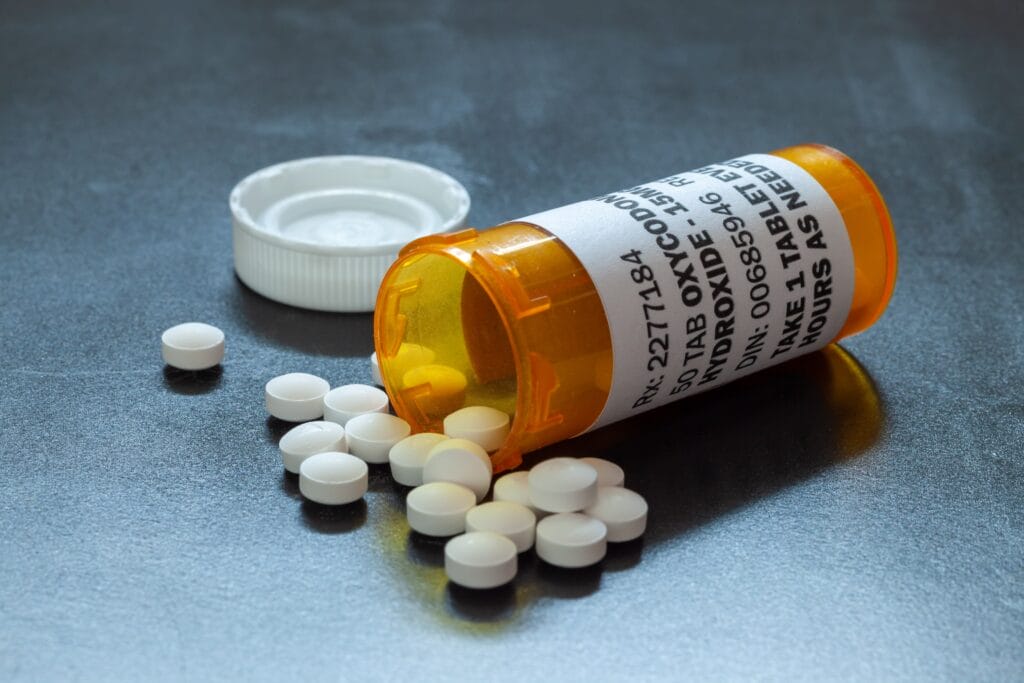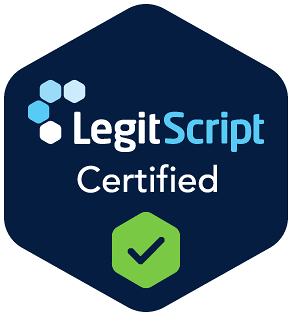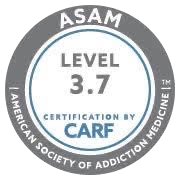Prescription opioids play a crucial role in alleviating pain for many people, and among the most widely prescribed are OxyContin and oxycodone. The medicines have similar active ingredients but also distinct characteristics.
While both OxyContin and oxycodone do have legitimate medical uses, they also have serious risks associated with them, including addiction, dependence and overdose. Both have unfortunately played a big role in the ongoing opioid epidemic in America as well.
What Is OxyContin?
OxyContin is a brand name for an opioid medication formulation—oxycodone hydrochloride. It’s a Schedule II controlled substance due to the high abuse and addiction potential. OxyContin is prescribed primarily for managing pain that’s moderate to severe in intensity when pain relief is needed around the clock and for an extended period.
The key characteristic of OxyContin that distinguishes it from other prescription opioids is its extended-release formulation. The formulation delivers oxycodone gradually over a long period—usually 12 hours. Prolonged release facilitates sustained pain relief. That’s more convenient for patients, reducing the need for frequent doses.
OxyContin’s effects stem from its binding to opioid receptors in the brain. Once it’s in these receptor sites, it modulates the perception and transmission of pain. Through activating these receptors, OxyContin can also lead to euphoria and sedation.
When used as prescribed and only when needed, OxyContin can help people experience pain relief, improving their quality of life. However, significant risks come with its use, especially when used inappropriately.
What is Oxycodone?
Oxycodone is a potent opioid for moderate to severe pain, and like OxyContin, it’s derived from the opium poppy plant and affects the central nervous system to relieve pain.
Oxycodone is available in various formulations. These include immediate-release tablets, extended-release tablets and oral solutions. Immediate-release oxycodone produces rapid pain relief, but the duration of action is shorter, so doses have to be taken more frequently. OxyContin is a brand-name version of oxycodone that’s extended-release.
Comparing OxyContin vs. Oxycodone
Both OxyContin and oxycodone are prescribed for pain, and both act on the brain and body in similar ways, but the following are some comparisons of the two.
Formulation
OxyContin is a brand-name formulation of oxycodone hydrochloride designed to provide sustained pain relief over 12 hours. Oxycodone, on the other hand, is available in both immediate and extended-release formulations. Immediate-release oxycodone usually requires dosing every 4 to 6 hours.
Because of the extended-release formulation, OxyContin maintains therapeutic plasma concentrations over an extended period and has a gradual onset of action.
Indications
OxyContin is indicated primarily to manage moderate to severe pain when continuous relief is needed for an extended period. Oxycodone is prescribed for different types of pain, including chronic and acute.
Abuse Potential
OxyContin has become notorious for abuse, especially when it’s chewed or crushed. Breaking up the tablets means it can bypass the extended-release mechanism, delivering a large oxycodone dose simultaneously. That greatly raises the risk of addiction and overdose.
Immediate-release oxycodone also has high abuse potential, especially when they’re used outside of what’s prescribed by a medical professional. If OxyContin isn’t broken or chewed, the risk of abuse is lower because of its extended-release properties.
Both OxyContin and oxycodone have the risk of respiratory depression and overdose, especially when used in high doses or combined with other central nervous system depressants like benzodiazepines or alcohol. The risk is also higher in people with respiratory conditions.
Prescription Opioid Abuse and Addiction
Prescription opioid addiction is a chronic condition. When you have an opioid addiction, also referred to as an opioid use disorder, you’re compulsively using these drugs even though they’re leading to harmful consequences. Opioid addiction can develop when you misuse prescription opioids like oxycodone and OxyContin, as well as hydrocodone, morphine and others.
Not everyone who uses prescription opioids will develop an addiction because there are a lot of factors that contribute.
For example, we all have genetic and individual differences in brain chemistry, some of which can predispose us to addiction. Examples include genetic variations related to your opioid receptors and neurotransmitter systems.
Psychological and mental health conditions can raise the risk of addiction if you’re using them to numb emotional pain or distress.
Social factors like access to opioids and peer influence are part of developing an addiction for a lot of people.
Some issues can stem from overprescribing opioids by healthcare providers, although there have been significant efforts to curb that problem in the past decade.
Signs of Prescription Opioid Addiction
There are some symptoms of addiction to prescription opioids that you can watch for in yourself or a loved one, including:
- Experiencing intense cravings and urges to use opioids.
- Difficulty controlling your use, even when you try to stop or cut back.
- Tolerance, so you need bigger doses to get the same effects you initially did.
- Having withdrawal symptoms when you stop using opioids means you have a physical dependence.
- Problems at school or work and neglecting responsibilities. Sometimes, this is broadly known as social and occupational impairment.
- Continuing to use opioids even though they cause bad consequences. These could be physical, mental or social.
The opioid epidemic is a reference to the massive increase in misuse, addiction and overdose deaths stemming from the use of these drugs. Several factors gave rise to the epidemic in the U.S., including aggressive marketing by pharmaceutical companies, a lack of initial regulation regarding opioid prescribing, and widespread availability of prescription opioids.
Getting Help for Prescription Opioid Addiction
Treatment programs for an opioid use disorder usually include medication, behavioral therapy and support services. The goal is to help you overcome your addiction while reducing cravings and managing withdrawal symptoms.
Medication-assisted therapy combines medicines like buprenorphine and naltrexone with behavioral therapy to treat addiction.
Behavioral therapy is a big component of addiction treatment because this is what helps you to address the underlying mental and behavioral aspects of your addiction. Behavioral therapies used to treat opioid addiction can include cognitive-behavioral therapy, motivational interviewing and contingency management.
Support services like peer support groups, family therapy and case management can help you maintain your recovery.
At San Diego Detox, we offer integrated treatment programs that can help you overcome addiction to prescription opioids. We individualize our treatment programs to meet your needs, including therapy, support services and medication. If you’d like to learn more or take the first step toward opioid recovery, we can help.








